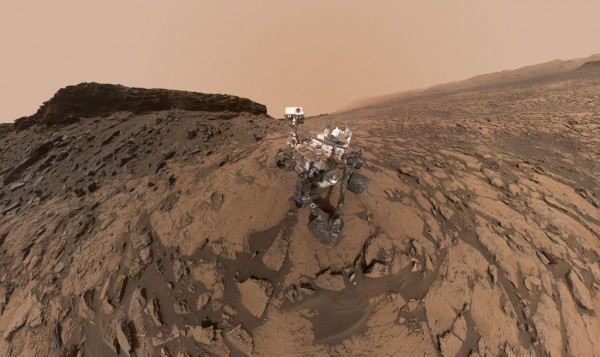By Ana Verayo, | March 23, 2017

This self-portrait of NASA's Curiosity Mars rover shows the vehicle at the "Quela" drilling location in the "Murray Buttes" area on lower Mount Sharp. (NASA/JPL-CALTECH/MSSS)
Since 2012, NASA's Curiosity rover has been exploring the dusty landscape of Mars. Now, the space agency has revealed that the trusty Martian rover is showing telltale signs of wear and tear. The aluminum wheels of the rover are falling apart due to the harsh environment of the Red Planet.
More specifically, there were breaks spotted within NASA's Curiosity rover on March 19. Mission scientists identified this problem after they compared similar grouses from the last wheel check that took place on January 27. Wheel damage is inevitable for terrain rovers. However, the two broken treads suggest a more severe sign of dilapidation.
Like Us on Facebook
Curiosity's wheels were developed and built by Tapemation. The aluminum wheels measure 20 inches in diameter and 16 inches across. They also possess 19 zigzag treads known as grousers that are protruding at a quarter of an inch to provide traction during traversing. There are also supporting titanium spokes that are curving inside the wheels.
Despite this technical setback, NASA officials are confident that Curiosity can still reach the required distance to complete its mission. According to Curiosity project manager, Jim Erickson of NASA's Jet Propulsion Laboratory, the entire set of six wheels have exceeded their working lifespan and can accomplish more than enough to arrive at the target destinations for the mission.
The Curiosity rover has traveled on Mars for around 16 kilometers since landing in 2012. The unmanned rover has never required any major repair or overhaul. Today, Curiosity is around the Murray Formations around the region of Mount Sharp. Mount Sharp is located inside Gale Crater where the rover originally landed.
For this mission, the rover is observing and examining sand dunes near the Murray Formation. When this journey is completed, Curiosity will traverse the Vera Rubin Ridge which is a formation filled with layers of clay, hematite, and sulfate. NASA is also planning to send another Martian rover on the Mars 2020 mission.
-
Use of Coronavirus Pandemic Drones Raises Privacy Concerns: Drones Spread Fear, Local Officials Say

-
Coronavirus Hampers The Delivery Of Lockheed Martin F-35 Stealth Fighters For 2020

-
Instagram Speeds Up Plans to Add Account Memorialization Feature Due to COVID-19 Deaths

-
NASA: Perseverance Plans to Bring 'Mars Rock' to Earth in 2031

-
600 Dead And 3,000 In The Hospital as Iranians Believed Drinking High-Concentrations of Alcohol Can Cure The Coronavirus

-
600 Dead And 3,000 In The Hospital as Iranians Believed Drinking High-Concentrations of Alcohol Can Cure The Coronavirus

-
COVID-19: Doctors, Nurses Use Virtual Reality to Learn New Skills in Treating Coronavirus Patients







